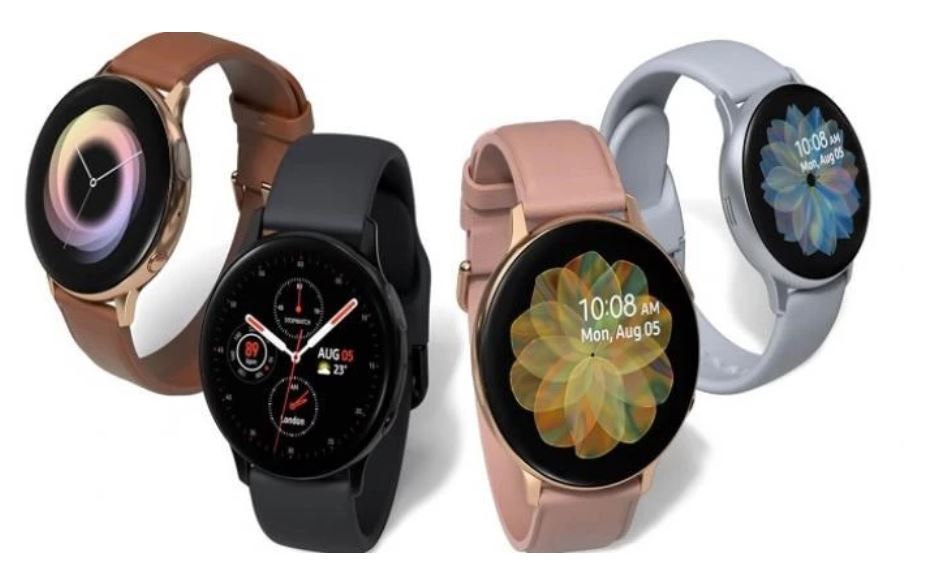


 10:10:48
10:10:48  2023-11-22
2023-11-22  1245
1245

The ability to measure stress levels is one of the most useful features of modern wearable devices and smartwatches. Although the measurement method may differ from one brand to another, most smart watches, including the Samsung Galaxy Watch, use built-in sensors to monitor some indicators, such as: heart rate change, skin conductance, and oxygen levels in the blood. This helps measure the user's stress levels and provides useful information about the state of stress and tension he or she is experiencing. Which prompts them to practice activities that help reduce stress.
If you are wondering how Samsung watches measure stress levels, we will explain below the most important information that will help you find out:
First: the heart rate monitoring sensor
All Samsung Galaxy Watch smart watch models feature a heart rate sensor that continuously tracks the user's heart rate. This sensor uses infrared lights and LEDs to measure changes in heart rate.
The Samsung watch also records variations in heart rate, also known as heart rate variability (HRV), which helps measure stress levels accurately.
The Galaxy Watch allows you to choose the appropriate method for measuring your heart rate. You can activate the Measure continuously feature in the Samsung Health app, to get a comprehensive overview of your heart rate patterns over a long period.
If you prefer to get periodic heart rate readings, you can set the Galaxy Watch to measure your heart rate every ten minutes from the application itself.
Second: Electrodermal activity (EDA) sensor
Samsung Galaxy Watches also include an Electrodermal activity (EDA) sensor to measure your skin's electrical conductivity, which changes when you're stressed and anxious.
This sensor detects small electrical responses produced by the eccrine sweat glands after a low, continuous voltage is applied to the skin, and this provides indications of the user's stress levels.
Smartwatches with an EDA sensor typically have metal areas on the underside that come into contact with your skin, and these areas act as electrodes to measure electrical skin activity.
The EDA sensor collects and analyzes data over a period of time, identifying changes that may indicate stress or tension. Based on the data collected by the EDA sensor, the Galaxy Watch provides information to the user about their stress levels.
Third: Analysis of sleep patterns
Lack of sleep or poor sleep quality is known to contribute to increased stress levels, and the Samsung Galaxy Watch can use the built-in accelerometer to detect when you are sleeping based on movement patterns, and then track sleep.
The Samsung smart watch can track sleep duration, sleep stages, and disturbances that you may suffer from during sleep, based on the movement patterns detected by the accelerometer, the data collected by the heart rate sensor, and the SpO2 sensor that helps track blood saturation levels with oxygen, in addition to the feature Snore detection.
Based on sleep tracking information, Galaxy Watch can identify sleep-related stressors that typically lead to increased stress.
Conclusion:
The Samsung watch analyzes the measurements it collects from the sensors we mentioned previously, uses specific algorithms, and relies on the user’s personal data, such as: age, height, weight, etc., then provides an estimate of the user’s stress levels, and the stress level appears in the Stress section in the Samsung Health application.
Reality Of Islam |
|

Monash scie

Two spacecr
 9:3:43
9:3:43
 2018-11-05
2018-11-05
10 benefits of Marriage in Islam
 7:5:22
7:5:22
 2019-04-08
2019-04-08
benefits of reciting surat yunus, hud &
 9:45:7
9:45:7
 2018-12-24
2018-12-24
advantages & disadvantages of divorce
 11:35:12
11:35:12
 2018-06-10
2018-06-10
 6:0:51
6:0:51
 2018-10-16
2018-10-16
 10:55:53
10:55:53
 2022-06-13
2022-06-13
 12:47:1
12:47:1
 2022-12-20
2022-12-20
 2:34:48
2:34:48
 2022-01-18
2022-01-18
 6:0:8
6:0:8
 2023-03-19
2023-03-19
 1:34:8
1:34:8
 2022-02-01
2022-02-01
 8:4:21
8:4:21
 2022-01-08
2022-01-08
 4:2:19
4:2:19
 2022-10-10
2022-10-10
 5:41:46
5:41:46
 2023-03-18
2023-03-18
| LATEST |